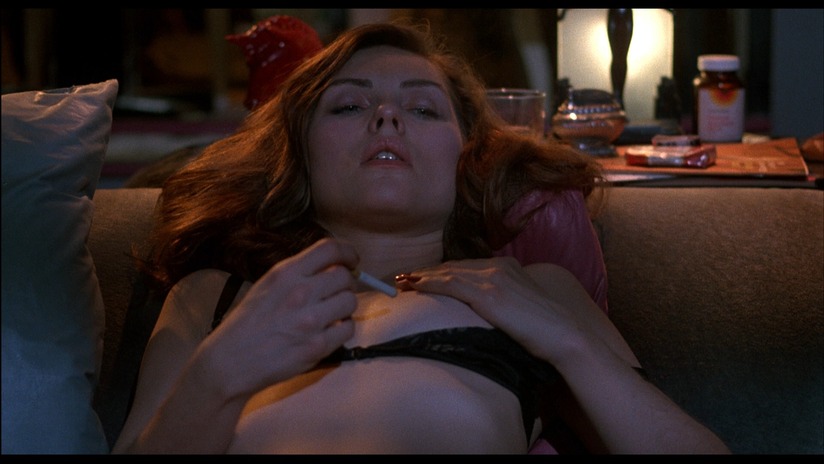 |
| From https://image.tmdb.org/t/p/w500/ losOgMDpia6Ozzx9X2Z4lOo1XMZ.jpg |
Dir. Tetsuro Takeuchi
 Returning to this means returning
back to about, say, eighteen or so, at college and discovering cult cinema in
between study. I'm not nostalgic for the period. I can't remember exactly what
the viewing experiences were like because, honestly except the films that stuck
with me, positively and negatively, I was more concerned with the discover of
films rather then how, and with getting my A-levels done. I was also a
miserable sod in hindsight who hated a lot of films that I now love, and a few
of the films I saw on old DVD released have never been re-released, now
out-of-print and not easy to even rent. Wild
Zero is in fact a film I've never returned to until now, and I appreciate
second hand stores more so than any nostalgia for viewing experiences because
barring those which had importance, the films themselves are of greater concern
then where I acquired a copy from and what the mood was like viewing them. When
Blockbusters could have some decent
gems hidden in their second hand bins. When Blockbusters actually existed...anyway, a meteorite hits Japan, or
what is perceived to be a meteorite as its established for viewers to be a UFO.
Around the crash site in a tiny Japanese town in the countryside are pulled in
various individuals, all of which regret being there when the UFO has led to a
zombie outbreak taking place. Amongst the individuals is protagonist Ace (Masashi Endô), a huge fan of the (real
life) band Guitar Wolf who, after a
prologue scene, is given a whistle to call upon them if things turn bad for
him. There's Tobio (Kwancharu Shitichai),
a potential love interest with more to her then meets the eyes, a trio who
regret wanting to see the "meteorite" crash site, a female arms
dealer and the criminals who wanted to purchase equipment from her, and a man
in golden hotpants called Captain (Makoto
Inamiya), a sleazy music manager who wants the heads of former employees Guitar Wolf. Guitar Wolf themselves -
the titular Guitar Wolf on vocals and
lead guitar, and Bass and Drum Wolf, march in to help deal with the
zombie threat when beckoned and look cool. Unfortunately I've never seen KISS Meets The Phantom of the Park (1978),
so I can't really make a joke about it in comparison to this. That and the fact
that along with American greasers, I suspect The Ramones may have been an inspiration for the Japanese rock band
instead.
Returning to this means returning
back to about, say, eighteen or so, at college and discovering cult cinema in
between study. I'm not nostalgic for the period. I can't remember exactly what
the viewing experiences were like because, honestly except the films that stuck
with me, positively and negatively, I was more concerned with the discover of
films rather then how, and with getting my A-levels done. I was also a
miserable sod in hindsight who hated a lot of films that I now love, and a few
of the films I saw on old DVD released have never been re-released, now
out-of-print and not easy to even rent. Wild
Zero is in fact a film I've never returned to until now, and I appreciate
second hand stores more so than any nostalgia for viewing experiences because
barring those which had importance, the films themselves are of greater concern
then where I acquired a copy from and what the mood was like viewing them. When
Blockbusters could have some decent
gems hidden in their second hand bins. When Blockbusters actually existed...anyway, a meteorite hits Japan, or
what is perceived to be a meteorite as its established for viewers to be a UFO.
Around the crash site in a tiny Japanese town in the countryside are pulled in
various individuals, all of which regret being there when the UFO has led to a
zombie outbreak taking place. Amongst the individuals is protagonist Ace (Masashi Endô), a huge fan of the (real
life) band Guitar Wolf who, after a
prologue scene, is given a whistle to call upon them if things turn bad for
him. There's Tobio (Kwancharu Shitichai),
a potential love interest with more to her then meets the eyes, a trio who
regret wanting to see the "meteorite" crash site, a female arms
dealer and the criminals who wanted to purchase equipment from her, and a man
in golden hotpants called Captain (Makoto
Inamiya), a sleazy music manager who wants the heads of former employees Guitar Wolf. Guitar Wolf themselves -
the titular Guitar Wolf on vocals and
lead guitar, and Bass and Drum Wolf, march in to help deal with the
zombie threat when beckoned and look cool. Unfortunately I've never seen KISS Meets The Phantom of the Park (1978),
so I can't really make a joke about it in comparison to this. That and the fact
that along with American greasers, I suspect The Ramones may have been an inspiration for the Japanese rock band
instead.  |
| From http://image.tmdb.org/t/p/original/ojrVPeTonELLNjCuyi3kNvlZxZo.jpg |
Of importance for me viewing this
film again is this belongs to the small but pronounced sub-genre of Japanese
zombie films. The Japanese cremate their dead, so the concept of the zombie
would be difficult to do in terms of logic unless aliens, curses or bio
weaponry is involved, which places the films into a hive of self referencing
other films by proxy unless a very different take was done on the concept.
They've only become common within the Millennium or so, over live action and
anime, and it wouldn't be coincidence that the obsession with them grew as
zombies became a pop culture phenomenon in the West too, George A. Romero's Dawn of
the Dead (1985) and his zombie films in general leading to this massive fad
of everything brain eating and decayed. As is the case with manga and anime High School of the Dead (2010), it
doesn't jar against titillation either for the Japanese entries. The Japanese
films I've seen since this nearly started as a fad have had a distinct
personality to them, although it's now apparent, revisiting this one, that a
lot of Japanese pop culture what've I've encountered from the Millennium, or at
least the late 2000s, has been created by individuals who are film geeks like
in the West and also possess the concept of irony. A lot of the films I've seen
are by people who have been directly referencing films like Romero's or The Evil Dead (1981) in some way or form, which Wild Zero does at one point too. In a
peculiar circumstance this film seems to predict what would happen in Japanese
cult cinema over the next ten years or more, made in 1999, the Sushi Typhoon movies evoked watching
this that seem to have ran with what this one had in mind in terms of tone and
presentation. The ironic films of such studio seemed to replaced the working
directors of before, and Wild Zero
is a predecessor of this movement, becoming the cult films for English speaking
countries from Nippon.
 |
| From http://4.bp.blogspot.com/-o5-KOm3C2U0/T_vJdkqA_ZI/ AAAAAAAAGqQ/3Cp5asScu24/s1600/WILDZERO.png |
It's difficult to elaborate on
the plot of Wild Zero because it's
an incredible mess. There are moments and a plot thread or two that exist - Ace
needing to overcome the zombies and hang-ups around Tobio's secret through the
virtue of rock 'n' roll, Captain wanting revenge on Guitar Wolf for missing fingers and a wounded pride after a prologue
shootout - but mostly its inconsistent and rambles on. This is the sort of film
that teaches me that complete randomness is not actually surreal or
unconventional - one cannot create a weird sensation through being deliberately
trying to be weird. It's not just because its irritating instead, but also the
paradox of surrealism as an idea - it suggests complete automatic randomness,
but to actually work it needs a controlled logic. It's got to make sense to be
senseless, which is why a truly weird film has a meaning to allow the weirdness
to exist, or is bouncing off the rubber walls and creating a meaning from the
gibberish that has an external logic to it. No idea is too random in a perfect
weird film because someone has done it on purpose or, if it was an accident,
they've let it be absorbed into the content or been forced to only have one
take or stuck with a producer's son whose wooden acting. Wild Zero is aiming for the later clearly but is being deliberate,
trying to catch lightning in a bottle, and doesn't have the logic or the
madness to work. It's not trying to be deliberately bad, thank God, but its
trying to be intentionally dumb returning to it, cool but also being laughably
silly at itself. It's a film, as a result, that does things just because, not
for a payoff that it'll milk for humour, cool scenes or something memorable,
but just because in an inconsistent way. The zombies are just there, which is
an immediate symbol of this fatal flaw, barring to chew down on characters who
aren't given a real reason to be of interest. The aliens are there to explain
the zombies but don't play an important part as the villains of the piece, just
cheap CGI. Zombies just chew up a female characters clothes while she's having
a shower just for the sake of her wearing a tartan one piece costume for the
rest of the film, but the film never really uses the sexy tough female
character its introduced at all or isn't actually interest in sex and nudity of
any kind either after that scene. There is a difference between self indulgence
and empty indulgence when the later means a ridiculous event may happens but is
never registered and ran with.
 |
| From http://www.mortado.com/mortado/movies/wild_zero/zero-02.jpg |
The jokey tone makes the film suffer
more, not taking itself seriously to the point that you don't care about any of
it at all. The result is actors mucking around, which would've fun while
filming it, but without context of that fun, the merriment in context of being
on the film set, makes the film hollow. Wild
Zero, in its speedy tone, could've worked if you were able to savour the
contents. The goofy nature of the characters against the situation taking
place. The music by itself, not in terms of a score. The fact, the thing I
remembered the most from the film, that an incredibly progressive love story
exists in the centre of it just for the hell of it with an irrelevance, Guitar
Wolf appearing as Ace's conscious to belittle him for not following the path of
true rock 'n' roll, and not make a maudlin, patronising song and dance about
it. But the film doesn't stretch and take advantage of these virtues and best
aspects. Instead its ADD, hyperactive filmmaking all about quirkiness,
incredibly loud and all over the place visually. Audibly too, the songs in the
score good by themselves but not with the images; as a heavy metal fan, it's
the same problem with heavy metal in most films in that the music is too fast
to properly synch with even a quick paced sequence in a film fully, creative an
audio-visual sludge expect for the rare cases a film maker has managed to get
the synch of image and music right. The entirety of it baring bright spots -
the fake CGI headshots, the screaming characters, the abrupt plot additions -
is in fact a sludge, never synching up into something consistent either,
without a clear concise tone to it to be entertainingly ridiculous. Instead its
tiring, the climactic battle abrupt with no payoff or amusement. You don't get
satisfaction with the film like you might've if a Takashi Miike of the 1999-2000 period was directing it.
 |
| From https://scumcinema.files.wordpress.com/2014/06/wild-zero-2.jpg |
Abstract Rating
(High/Medium/Low/None): None
Wild Zero would qualify as a weird film for others. For me, it's
not. There is nothing unconventional about any of the content in this in the
truest sense. It may be strange when you first encounter it, but to be truly
unconventional is not just stick things together that look intentionally
"weird" but the subtle, minor details that catch you off guard. It's a
further problem because of the whole issue surrounding the "weird
Japan" mentality a lot of fans of Japanese pop culture, including myself,
are in danger of encouraging. For everything that is legitimately bizarre that
has come from Japan, even having never stepped onto the country's soil, we
should take a pinch of salt and realise that there is normalacy, people going
to work every day like in the West, and country villages and small towns with
populations that mostly don't care about such strange material, nor even know
of the existence of low budget zombie films like Wild Zero. The film never feels like it would baffle those who've
encountered the truly strange in cinema either. This film, and I could so
easily get into snobbery with this statement, is surface level weirdness which
isn't any deeper, defined by surreal by someone who hasn't read what surrealism
actually means.
 |
| From http://3.bp.blogspot.com/-kKF0Vxzm5KE/TfO8yUWMCII /AAAAAAAABZM/KEeZpjDTodY/s1600/wild-zero-6.jpg |
A Cinema of the Abstract movie?
No, because disappointingly, it's
turned out to be the stereotype of the film that I am bored with - cult films
all about laughing at their own silliness and without any meat to them. If you
get used to a lot of odd, weird films, watching a lot as I have, not a
professional expert on this subject, not someone who claims to be better and
know more than anyone, but having watched so many and read up on appropriate
subjects connected to this topic, this isn't remotely going to be on the list.
Sadly films ran further with this in Japanese cult cinema, not just Sushi Typhoon, and I've been there
watching movies that I have not found any real entertainment in baring an occasional
chuckle.
























-2010-09-29-20h24m57s38.jpg)










.jpg)



